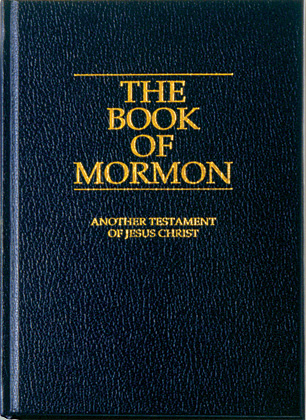The Book of Abraham and the Mormon Translation Problem

Mormons have a special place in my heart. The Mormons I have known have always been kind, generous, moral, and easy to talk to. I have enjoyed hanging out with them, and we have shared many mutual interests. But, even though I genuinely appreciate much about the Mormons I have known, that does not change the fact that Mormonism is a false religion that leads millions astray from the truth.
Mormonism believes in the inspiration of the Bible (like Christians), but they also embrace three other inspired books: The Book of Mormon, The Doctrine and Covenants, and The Pearl of Great Price. Although each of these “extra” books is worth talking about in their own right, I want to briefly mention a significant issue concerning The Pearl of Great Price, specifically a part of its contents known as The Book of Abraham. Surprisingly, many of the Mormons I have talked to about this issue are not even aware of the significant problems The Book of Abraham poses to the integrity of the Mormon institution.
Historical Background to the Book of Abraham
The history of the Book of Abraham begins in July of 1835. The Documentary History of the Church (a Mormon record) gives the perspective of Joseph Smith in the following statements:
On the 3rd of July, Michael H. Chandler came to Kirtland to exhibit some Egyptian mummies. There were four human figures, together with some two or more rolls of papyrus covered with hieroglyphic figures and devices. As Mr. Chandler had been told I could translate them, he brought me some of the characters, and I gave him the interpretation… (235).
Soon after this, some of the Saints at Kirtland purchased the mummies and papyrus, a description of which will appear hereafter, and with W. W. Phelps and Oliver Cowdery as scribes, I commenced the translation of some of the characters or hieroglyphics, and much to our joy found that one of the rolls contained the writings of Abraham, another the writings of Joseph of Egypt, etc…. (236).
In sum, Joseph Smith and his followers purchased papyri that had Egyptian hieroglyphics on them. Then, Joseph Smith translated these papyri for the benefit of the Mormon community.
Joseph Smith’s translation of the Egyptian papyri resulted in five chapters. In these chapters, the story is told of Abraham’s journeys through Chaldea, Haran, Canaan, and Egypt. This is what Joseph Smith claimed the Egyptian papyri talked about.
The Egyptian Papyri after Smith’s Death
After Joseph Smith died, the papyri and other Egyptian artifacts came into the possession of Smith’s mother and her other son, William. They continued to display the artifacts until around 1856, the death of Smith’s mother. After Lucy Smith’s passing, some of the artifacts and papyri made their way to the Chicago Museum around 1863. Sadly, during the tragic Chicago fire in 1871 the museum and everything in it was destroyed.
It was thought at the time that all the papyri and artifacts were lost in the fire. However, it turns out that Abel Combs, the man who had taken over the artifacts and papyri after the death of Smith’s mother, had not sold everything to the Museum. Through a series of events, in 1960s one of the significant papyri made its way back into the hands of the LDS Church and was made available for examination.
Comparing Smith’s Translation with the Egyptian Papyrus
During the time of Joseph Smith’s translation, knowledge of Egyptian had not yet been revived. However, thanks to the discovery of the Rosetta Stone in 1799 AD, that was quickly remedied at the turn of the 20th century. By the time the papyrus was “rediscovered” in the 1960s, there were plenty of Egyptian scholars available to double-check Smith’s translation. As the papyrus was reviewed by Egyptologists, they identified the text as dealing with a common Egyptian burial ritual. It had nothing to do with Abraham or his sojourning.
Significance of the Faulty Translation of the Book of Abraham
A comparison of the Book of Abraham (as contained in The Pearl of Great Price) with the Egyptian papyrus indicates Joseph Smith did not accurately translate the hieroglyphics. Rather, it appears he made up much of the “translation.” There are multiple insights to be gleaned from this observation.
First, if Joseph Smith could not translate Egyptian accurately, then his “translation” of the Book of Mormon cannot be trusted either. For those not familiar with the story, Joseph Smith claimed that the angel Moroni appeared to him and gave him golden tablets which contained ancient Egyptian on them. Yet, if Smith could not translate Egyptian, then the entire Book of Mormon is dubious.
Second, since Joseph Smith claimed to be a prophet of God, he is held to the standard of truthfulness expected of prophets (cf. Deut 18:20–22). Since he is demonstrably lying about his translation of the Egyptian texts, he should be considered a false prophet and a deceiver.
Finally, all of this leads to the inescapable conclusion that Mormonism is a faulty religion based on a false prophet, utilizing falsified holy writings. This is a serious charge, but one that is backed up by the evidence.
As I said at the beginning, I love my Mormon friends. This blog post is simply an attempt to reach out to my Mormon friends and encourage them to critically evaluate what the Mormon Church claims. In addition, I want to help my Christian friends to understand some of the significant problems that we ought to be talking to Mormons about. By God’s grace, perhaps we can point out some of the significant problems in Mormonism, and point people to the one true God.
photo credit: More Good Foundation Book Of Mormon via photopin (license)